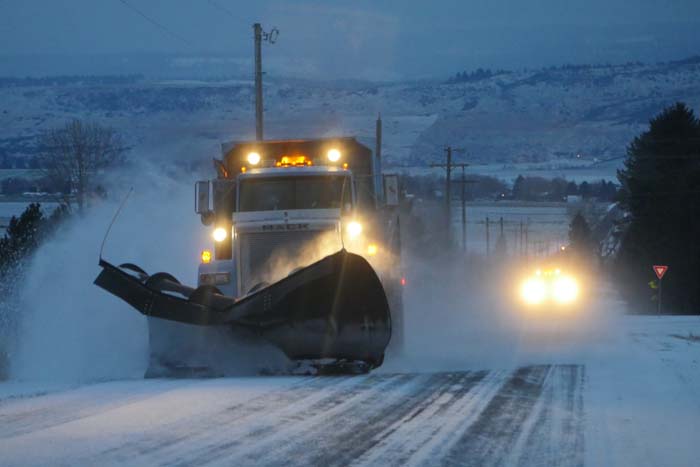La Nina settling in for third straight winter
Published 1:00 pm Wednesday, September 28, 2022

- The Observer, FileA snowplow gets an early start in December 2016 in Union County. The La Nina winter of 2016-17 inundated La Grande with 32 inches of snow, more than a third of which fell in December. Federal forecasters in September 2022 announced they are nearly certain a La Nina will prevail in early winter and think it likely will stick around until early spring.
SALEM — Federal forecasters are nearly certain a La Nina will prevail in early winter and think it likely will stick around until early spring, raising prospects for ample snow.
The National Weather Service’s Climate Prediction Center on Thursday, Sept. 8, predicted there is a 91% chance that a La Nina will influence the climate worldwide through November.
Forecasters are uncertain how long the cool sea-surface temperatures that trigger a La Nina will last. Forecasting models agree that waters will begin warming in late 2022, but disagree on how soon temperatures will get to normal.
The climate center settled on forecasting a 54% chance for a La Nina to be in place between January and March.
If La Nina prevails, the odds favor a weak one, though there is a 46% chance it will be moderate or strong in early winter, according to the prediction center.
La Nina conditions have ruled for the past two winters. A third-straight La Nina winter would be rare. It has occurred only twice since 1950.
La Nina is linked to cooler and wetter winters in the northern U.S. Eastern Washington irrigators who rely on melting snow are among the beneficiaries.
Above-average temperatures create an El Nino. Washington’s 2015 snowpack drought was during an El Nino. There is almost no chance for an El Nino this winter, according to the climate center.
La Nina typically worsens droughts in some regions, including Southern California and the Southwest U.S.
Ongoing droughts in East Africa and southern South America bear the hallmarks of La Nina, according to the World Meteorological Organization.
In predicting a third-straight La Nina, the climate center considered 24 forecasting models. The models offered a range of predictions on sea-surface temperatures.
Only one, a Beijing Climate Center model, predicts that temperatures will be above average in November.
A second Beijing Climate Center model is the only one that predicts that sea-surface temperatures will be cold enough to trigger a strong La Nina this winter.





